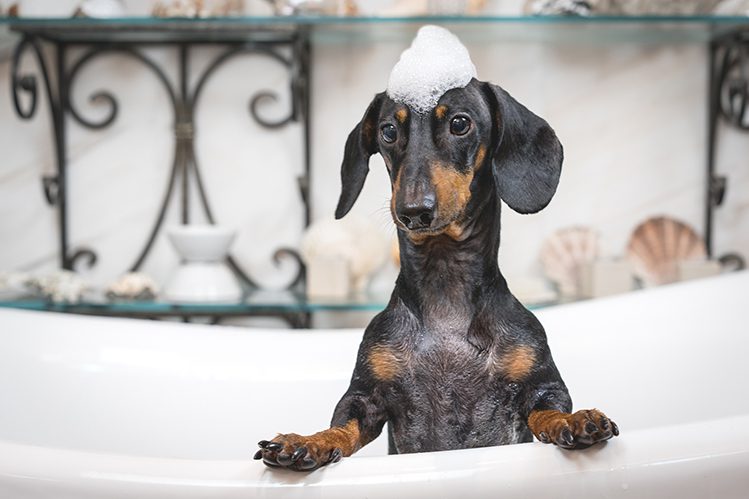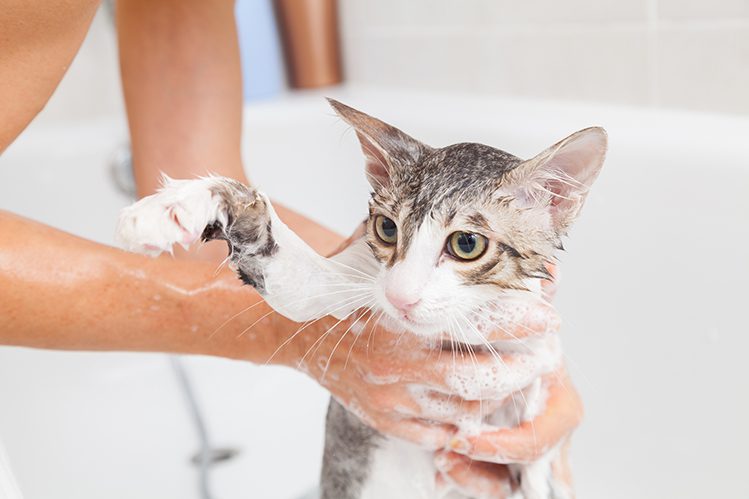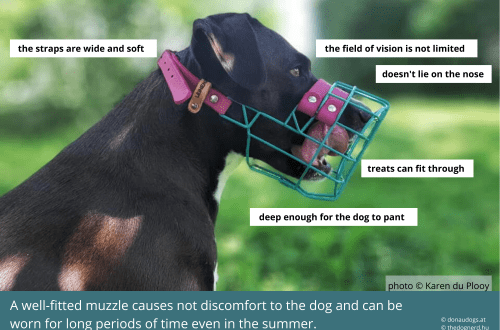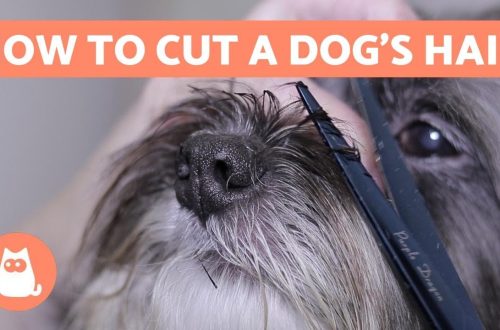
Short hair care for dogs and cats
It is believed that short-haired dogs and cats are easier to care for. Is it really? What is the difference between caring for shorthaired pets?
The length of the coat is an important characteristic of a pet. Many purposefully choose a cat or dog with short hair. It is believed that they are easier to care for and that there will be no wool in the house from them. But is it really so?
Dogs and cats with short coats do not need to be brushed frequently. Their coat practically does not tangle and does not gather into tangles. In addition, through short hair it is easy to control the condition of the skin. All of these are huge pluses. But these pets shed even more often than long-haired ones, because. their hair growth cycle is shorter. Add to this seasonal molting – and you will understand that there can be more wool in the house from the “short-haired” than from the bobtail. Of course, short hair is not as noticeable as long hair, but it is much more difficult to remove it from clothes and furniture. But that’s not the point.
It turns out that short hair gets dirty faster and smells more often (in dogs). Why is this happening? To understand, you need to understand the features of the short coat.
In short-haired cats and dogs, the undercoat is poorly developed: for 1 primary hair there are up to 6 secondary hairs. Such wool cannot protect the skin from the adverse effects of the environment, and the body protects itself in another way – the production of sebum.
Sebum is a mixture of sweat and sebaceous gland extracts secreted into the follicular sac where the hair grows from. It has antibacterial, water-repellent and other useful properties, which means it protects the skin well from temperature extremes, dryness and injury. However, due to the increased production of sebum, short-haired pets get dirty faster, and dogs smell more strongly. This is the main feature of the short type of wool.
The production of sebum in short-haired dogs and cats is 30% higher than in animals with medium and long hair types.
The second feature is a small angle of inclination of the hair to the skin (about 30 degrees). This provides a tighter fit of wool and increases its protective properties. The reverse side of the coin: it is more difficult to remove dirt from the skin with a dense coat. But if you choose the right funds, the problem is quickly solved.

Short-haired pets produce more sebum than medium- and long-haired ones. At the same time, their coat is denser. To eliminate greasiness, you will need a shampoo with high cleaning properties. But the conditioner, on the contrary, should be softer and more nutritious: after applying the shampoo, it will have to restore the protective layer of the skin.
The right combination of shampoo and conditioner is especially important in the care of short hair. These products work as a team: the shampoo removes sebum, while the conditioner restores protection so that the skin does not become irritated and does not dry out. As a result, the skin and coat are clean, and the hydro-lipid layer and the functioning of the glands are not disturbed. You can not be afraid of the appearance of an unpleasant odor, rapid skin contamination, irritation and dryness.
Proper care for short hair is, first of all, properly selected products. Shampoo and conditioner should take into account the characteristics of the coat. For example, Iv San Bernard, a brand of professional cosmetics for animals, divides products by type of wool (short, medium and long) based not on the length of the hair, but on its properties and structure. This is the first company in the world to divide the range in this way. All other manufacturers have already followed suit.
Whatever brand you choose, the main thing is to carefully read the information on the package and follow the instructions for use.
Shampoos and conditioners are concentrated and require dilution. If the products are applied to the pet in their original form, they will be very difficult to wash off, and the pet may experience an allergic reaction.
- While bathing, the shampoo is gently applied in the direction of hair growth. It is better to start with the most contaminated areas, for example, from the legs, and only then move on to the back and other areas.
- Shampoo is important to rinse well, right to the squeak. After that, according to the instructions, conditioner is applied and also thoroughly washed off. Ready!
- After washing, do not forget to dry your pet and treat him with a treat, because for many, bathing is a real feat.

What if you just shave your pet? Then there will be no problems with wool! And this is one of the main myths! Shaving won’t solve the problem.
Firstly, the hairs from shaving do not disappear, but become shorter. They will fall out as before. It’s just that instead of short hair, your chair will have stiff “stubble”.
Secondly, not all dogs and cats can be cut (and even more so shaved). Many breeds of haircuts are contraindicated. Experimenting with the length of the coat can lead to skin diseases, impaired thermoregulation, deterioration in the quality of the coat and baldness.
Respected grooming salons have long abandoned such procedures. Masters do not shave or cut pets, if the breed standard does not provide for this or if there are no medical indications for the procedure.
Be careful. Consult with veterinarians and trusted groomers. Choose professional care products and follow the instructions for use. Then your pets just have to be both healthy and brilliant!





